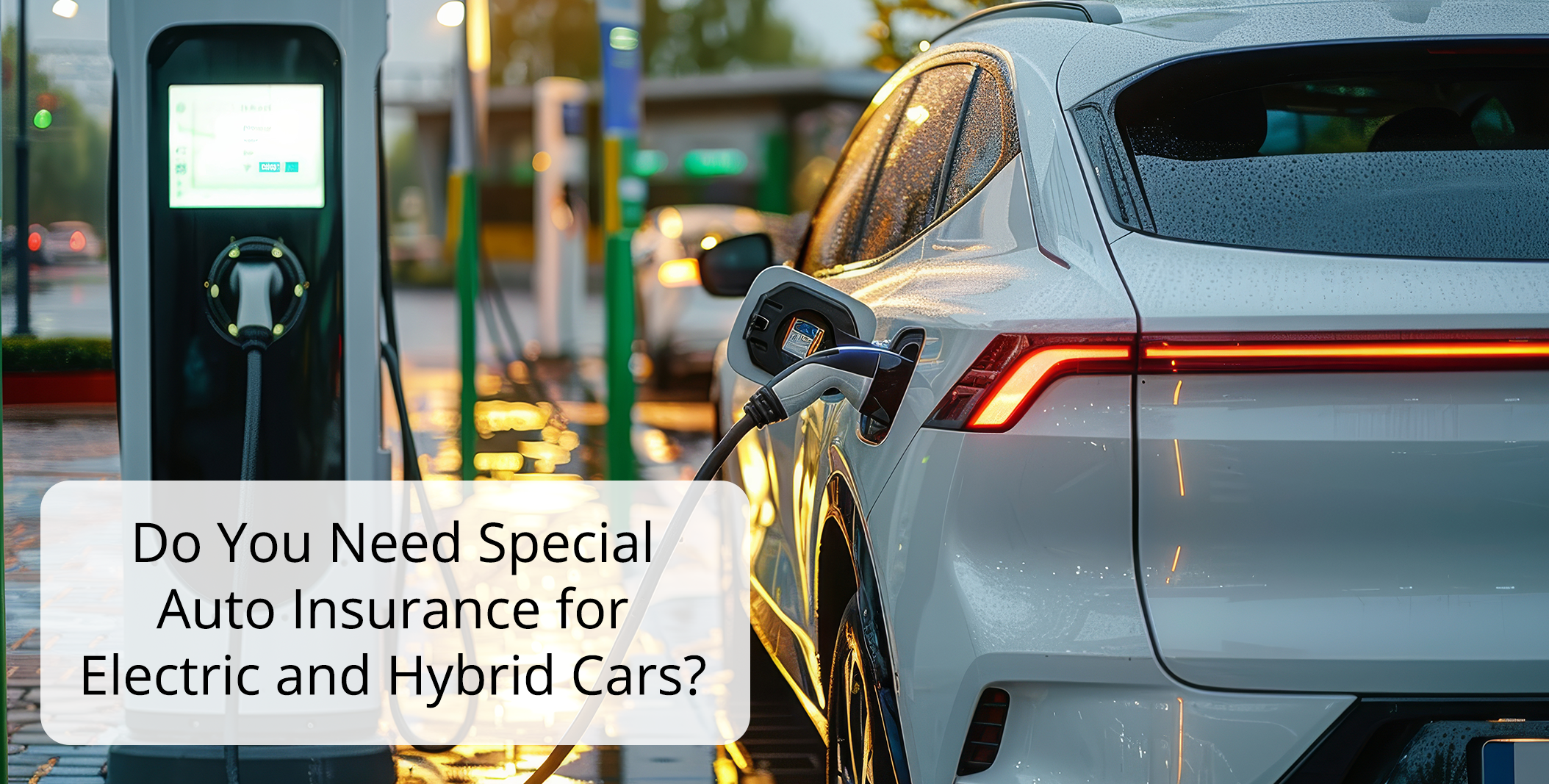Electric and hybrid vehicles are growing in popularity due to their environmental benefits, lower operating costs, and advanced technology. However, many drivers wonder whether these vehicles require special auto insurance and how insuring them differs from traditional gas-powered cars.
This blog explores the unique aspects of insuring electric and hybrid vehicles, factors that impact premiums, and tips for finding the best coverage for your eco-friendly car.
Do Electric and Hybrid Cars Require Special Insurance?
Electric and hybrid vehicles don’t require a specific type of insurance policy. They are typically insured with the same types of coverage used for conventional cars, including:
- Liability Insurance: Covers damages and injuries you may cause to others in an accident.
- Collision Insurance: Pays for repairs to your vehicle after an accident.
- Comprehensive Insurance: Covers non-collision-related incidents, such as theft, vandalism, or natural disasters.
- Uninsured/Underinsured Motorist Coverage: Protects you if an at-fault driver lacks sufficient insurance.
- Personal Injury Protection (PIP) or Medical Payments Coverage: Covers medical expenses for you and your passengers.
However, due to the unique features and technology of electric and hybrid vehicles, certain factors can affect their insurance rates and coverage options.
Factors That Impact Insurance for Electric and Hybrid Vehicles
1. Higher Vehicle Value
Electric and hybrid vehicles often have a higher upfront cost than traditional cars, which can increase insurance premiums. Insurers base premiums on the cost to repair or replace the vehicle in the event of a claim.
2. Specialized Repairs
Electric and hybrid vehicles require specialized parts and skilled technicians for repairs. For example, battery replacement or repairs to advanced electronics can be significantly more expensive than fixing a traditional engine. These higher repair costs are reflected in insurance premiums.
3. Advanced Safety Features
Many electric and hybrid cars come equipped with cutting-edge safety technology, such as autonomous driving capabilities, collision avoidance systems, and adaptive cruise control. These features can reduce the likelihood of accidents and may qualify you for discounts with some insurers.
4. Battery Replacement Costs
The battery is one of the most expensive components of an electric vehicle (EV). If damaged in an accident, replacing the battery can cost thousands of dollars, potentially increasing claims payouts and premiums.
5. Limited Repair Shops
Not all repair shops are equipped to handle EV-specific issues, and finding a qualified repair center may lead to higher costs and longer repair times.
6. Environmental Incentives
Some insurers offer discounts for driving eco-friendly vehicles as part of their commitment to sustainability.
How to Save on Insurance for Electric and Hybrid Vehicles
While insurance for electric and hybrid vehicles can be more expensive, there are ways to save:
1. Take Advantage of Discounts
- Safety Features: If your car includes advanced safety systems, ask your insurer about discounts.
- Eco-Friendly Vehicle Discounts: Some insurers offer reduced rates for hybrid or electric cars to encourage environmentally conscious choices.
- Bundling Policies: Combine your auto insurance with other policies, such as home or renters insurance, to receive a multi-policy discount.
2. Choose Usage-Based Insurance
If you don’t drive frequently, usage-based insurance (UBI) may lower your premiums. These policies use telematics to monitor driving behavior and reward safe and low-mileage drivers.
3. Compare Quotes
Insurance rates for electric and hybrid vehicles can vary significantly between providers. Shop around and compare quotes to find the best deal for your specific vehicle.
4. Increase Your Deductible
Opting for a higher deductible can reduce your monthly premium. However, ensure you can afford the deductible amount in case of a claim.
5. Maintain a Clean Driving Record
Safe driving habits and a clean record can qualify you for lower rates and good driver discounts.
Special Coverage Considerations for Electric and Hybrid Vehicles
In addition to standard coverage, you may want to consider these optional coverages for your electric or hybrid vehicle:
1. Battery Coverage
Since the battery is one of the most expensive parts of an EV, some insurers offer specific coverage for battery damage caused by accidents or non-collision incidents.
2. Charging Equipment Coverage
If you’ve installed a home charging station, ensure it’s covered under your homeowners or renters insurance. Some auto policies may also include an endorsement for charging equipment.
3. Roadside Assistance
Running out of charge can be a common concern for EV owners. Roadside assistance coverage can help with towing or mobile recharging services.
4. New Car Replacement Coverage
If you’re insuring a new electric or hybrid vehicle, this coverage replaces your car with a brand-new one of the same make and model in the event of a total loss.
5. Gap Insurance
For leased or financed vehicles, gap insurance covers the difference between your car’s actual cash value and the amount you owe on the loan or lease.
What Insurers Are Doing to Support EV and Hybrid Owners
As the popularity of electric and hybrid vehicles grows, many insurers are adapting their offerings to meet the unique needs of these drivers. This includes:
- Specialized policies for EV owners.
- Incentives for eco-friendly driving habits.
- Partnerships with charging networks and repair shops to streamline claims and repairs.
Conclusion
While electric and hybrid vehicles don’t require a special type of auto insurance, their unique features and repair costs can affect premiums. By understanding these factors and exploring discounts, you can find affordable coverage tailored to your vehicle.
Consult with an independent insurance agent to compare quotes and customize a policy that meets your needs. With the right coverage in place, you can enjoy the benefits of your eco-friendly car with confidence and peace of mind.
Disclaimer: The information provided in this article is for educational purposes only. It is important to consult with a qualified insurance professional for advice tailored to your specific circumstances.

